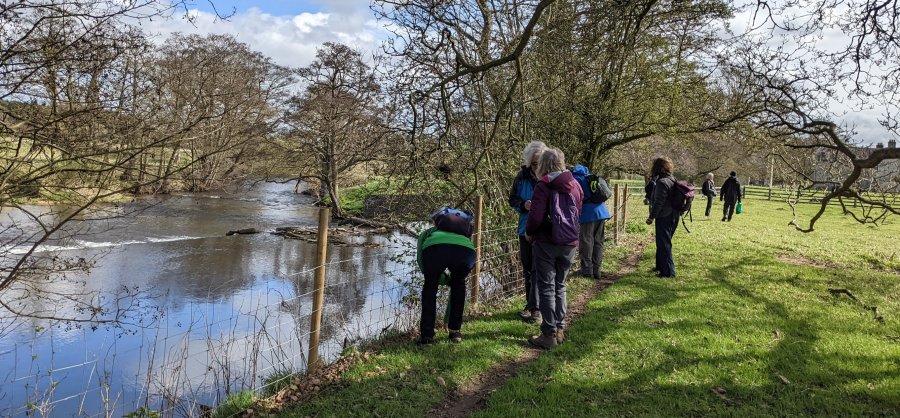

8 Ryenats members and a very welcome guest met in Nunnington for a walk along the river to Ness and then back through Joan’s Wood and along the ridge of Cauklass Bank, returning down the fields and past the church and through the attractive village. We started at the riverside near the bridge, hoping to see one of the resident otters, but no luck....
Although this was primarily a botanical walk we did look out for birds and insects, but as it was quite cold we didn’t see many of the latter, and sadly no butterflies. We did notice a harlequin ladybird on the trunk of a large sycamore, and this rather wonderful female tawny mining bee on the verge (thanks, Andy for the ids), plus a rather groggy 7-spot ladybird in the riverside willows, some bumblebees (feeding on the willow catkins), a drone fly and a small group of dancing small gnats. We saw or heard 17 birds, including both greylag and Canada geese from the artifical lake at Ness.
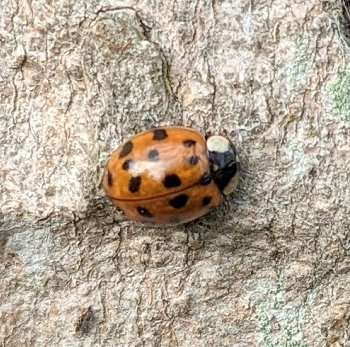 Harlequin ladybird | 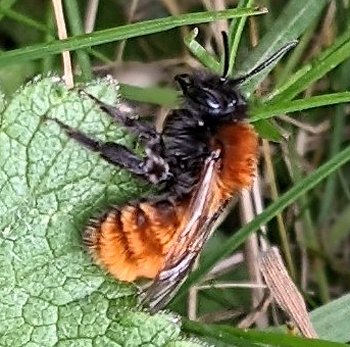 Tawny mining bee (female) |
We noted the colony of Green Hellebore growing at the foot of the wall of the Hall gardens, and wondered about its origins. This is a native woodland plant (growing for example near Ellerburn and in Forge Valley as well as at Ashberry where it may be an escape) but was probably brought into the Hall gardens and has subsequently jumped over the wall, or even perhaps been planted here. The same is likely true of the small patch of Yellow Star of Bethlehem (Gagea lutea) which grows under a large tree but rarely flowers, mainly because it is nibbled off by sheep, deer and perhaps even rabbits – even the leaf tips had been eaten, which made demonstrating their unique shape impossible!
We saw a good variety of plants, though many were not in flower and we had to rely on the leaves for identification (so some of those in the list are a bit speculative). We were fortunate to meet the farmer from the mill who told us that the plum tree in full bloom was a gage, but we still couldn’t id one of the flowering willows for sure; I suspect it may be a hybrid between something like goat willow and an osier, as it had pussy willow catkins but the emerging leaves looked very long and thin. We were a little early in the season for many of the plants on the limestone ridge, and I shall return later to try and confirm the two “unknowns” that we think may have been bladder campion and a lettuce. Also we did not find some plants that I know grow there in summer, notably field scabious, lesser burnet saxifrage, hoary plantain and field garlic.
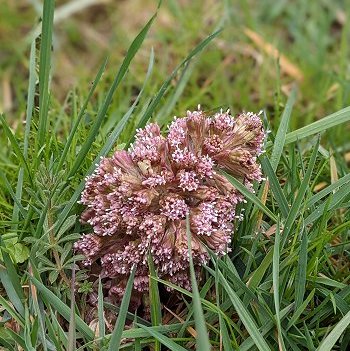 Butterbur | 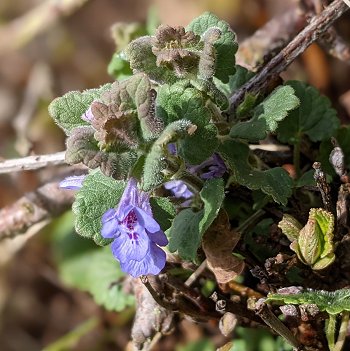 Ground ivy |
Unfortunately as we climbed up onto the ridge the heavens opened, so we had an extended lunch in the shelter of a barn. To compensate, the sun came out afterwards and we had a very pleasant walk back, listening to the joyful sound of several skylarks.
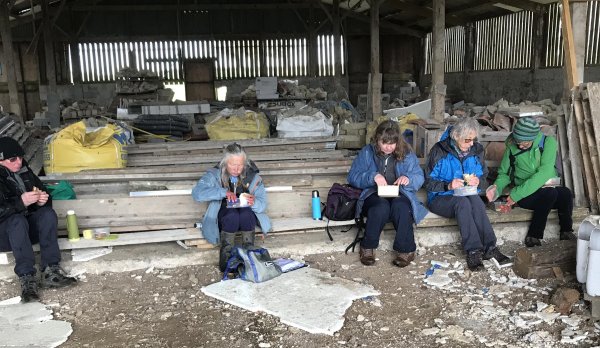
This was an interesting meeting, and it was instructive to see the differences in the plants in the various habitats (riverside, pasture, wood, hedges and verges, the edges of crop fields and the stony track). Many thanks to Maggie for suggesting and leading the route, Nick for organising the parking at the Hall, Gill for the botanical knowledge and above all Ian for the excellent bakewell tart back at the cars for tea.
Wren
Chiffchaff
Heron
Jackdaw
Woodpigeon
Rook
Blue tit
Pied wagtail
Coal tit
Great tit
Greylag
Canada goose
Mallard
Carrion crow
Skylark
Robin
Yellowhammer
Bumblebee, probably buff-tailed
Drone fly (Eristalis sp.)
Tawny mining bee (female)
Harlequin ladybird (on sycamore)
7-spot ladybird (on willow)
Small gnats
Gill Smith 2022
Back to top| © Ryedale Natural History Society 2022, Photos © Gill Smith and Maggie Dickinson 2022 |